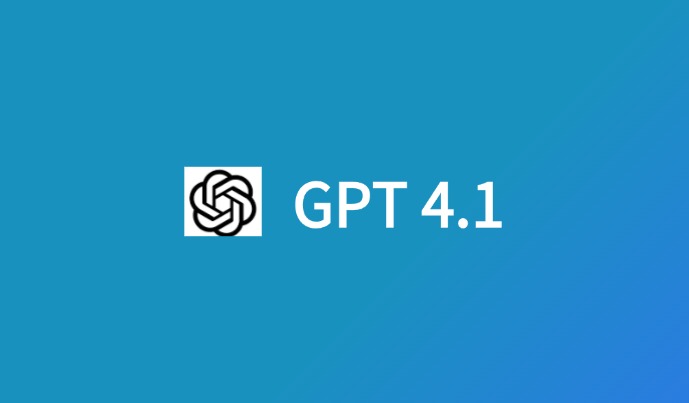Introduction: The Rise of Image Summarizers for Research in 2025
In 2025, research across all disciplines has become increasingly reliant on AI technologies to streamline data analysis, especially in the realm of image processing. Image summarizers for research have emerged as powerful tools that enable researchers to extract and summarize relevant data from images in a matter of seconds, saving valuable time and improving productivity. These tools help researchers process images, photographs, and diagrams quickly, converting visual data into actionable insights.
Why Image Summarization is Essential for Research
Images have always played a pivotal role in research, from scientific diagrams to photographs in social science studies. However, the challenge of manually extracting text or information from images can be overwhelming. By using AI-powered image summarizers, researchers can focus on analysis instead of tedious data extraction, making the research process far more efficient. Image summarization tools significantly reduce the time spent on manual data entry and make it possible to process large quantities of images with ease. This technology allows for a more accurate and efficient understanding of visual data, facilitating better decision-making and more advanced research conclusions.
Understanding Image Summarizers for Research
What Is an Image Summarizer?
An image summarizer is an AI tool that extracts key information from visual content. The tool scans the image, identifies important text, graphics, or patterns, and condenses this information into a summarized format. For researchers, this means that they no longer need to manually transcribe or interpret every piece of information from an image. These tools leverage advanced image recognition algorithms and machine learning to produce summaries that reflect the key components of the visual data.
Types of Image Summarizers Used in Research
- OCR-Based Summarizers: Optical Character Recognition (OCR) tools are commonly used to extract text from images. These tools are invaluable when dealing with scanned documents, printed text, or other visual data that includes readable characters.
- Contextual Summarizers: These AI models focus on understanding the context of the image, such as analyzing diagrams or charts. By interpreting the layout, structure, and relationships within the visual data, contextual summarizers can produce summaries that are highly relevant to research goals.
- AI-Powered Visual Recognition Tools: These tools can also identify objects or trends in research-related images and provide insights based on visual patterns. They are especially useful when dealing with complex images, like those used in scientific research, where identifying specific objects or phenomena is crucial.
Top 5 Image Summarizer Tools for Research in 2025
| Tool | Features | Free Version | Pros | Cons |
|---|---|---|---|---|
| iWeaver | OCR, AI-based summarization | Yes | Fast, accurate, user-friendly | Limited free version features |
| Tesseract OCR | Free OCR software | Yes | Open-source, customizable | Requires technical knowledge |
| Google Vision | Image analysis and text extraction | Yes | Cloud-based, supports multiple languages | Limited advanced customization |
| DeepAI Image Summary | AI-based summarization for research images | No | Great for detailed analysis | Paid service, might be too complex |
| Adobe Scan | OCR and document scanning | Yes | Reliable, integrates with Adobe apps | Limited summarization capabilities |
New Applications and Innovations in Image Summarization for Research
The future of image summarization lies in the intersection of visual data and natural language processing (NLP). A new concept, “Visual Intelligence Integration”, refers to combining advanced image summarization with NLP models to create not only summaries but insightful narratives from research images.
Imagine a system that could analyze an experimental setup’s image, summarize key components, and even suggest improvements based on previous research data. This could revolutionize how researchers approach data interpretation, offering not just summaries, but actionable insights derived from both the visual and textual data associated with images.
Step-by-Step Guide to Using an Image Summarizer for Your Research
Step 1: Choose the Right Tool
Consider your research needs. Do you need basic text extraction, or are you analyzing complex images like scientific diagrams? Choosing a tool that meets your specific needs will ensure the process is efficient. For instance, OCR tools are ideal for extracting text from images, while AI-based tools are better for more complex tasks, like recognizing objects or analyzing diagrams.
Step 2: Upload Your Image
Once you’ve selected the tool, simply upload the image. Most platforms accept various formats, such as JPEG, PNG, and PDF. It’s important to ensure that the quality of the image is high enough for the tool to process it accurately.
Step 3: Image Processing
The AI will process the image, identifying key elements such as text, graphs, or other relevant visuals. The image is then converted into a summarized format, usually with key text or a visual representation of the data extracted. In some cases, the tool may also highlight important trends or insights.
Step 4: Review and Customize
After the tool has generated the summary, you can review the output to ensure accuracy. Some tools allow you to make adjustments or refine the analysis further. You can add annotations, adjust context, or modify the results to better fit your research requirements.
Step 5: Integrate into Your Research
Once you’re satisfied with the summary, integrate it into your research. The summarized image can now serve as a key piece of data, referenced in your reports, papers, or presentations.
Conclusion: The Future of Image Summarization in Research
The integration of AI in research tools, specifically image summarizers, has revolutionized how researchers handle visual data. By providing quick, accurate insights, these tools are not only saving time but also enhancing the overall quality of research outputs. As AI technology continues to advance, it’s clear that image summarizers will evolve to support even more complex and diverse research needs.
Whether you’re working with scientific diagrams, historical photographs, or complex charts, adopting the right image summarizer can drastically improve the efficiency and precision of your research. Image summarizers not only reduce the manual effort but also enable deeper insights that were previously difficult or time-consuming to obtain. By staying on top of the latest advancements and selecting the best tool for your research, you can ensure that your work remains at the cutting edge in 2025 and beyond.
As we move further into the digital age, the future holds even more possibilities for combining AI and image summarization in innovative ways. From enhancing the accuracy of data interpretation to providing new methods of collaboration, these tools will play a critical role in shaping the future of research.
FAQ: Frequently Asked Questions about Image Summarizers for Research
1. What is an image summarization tool?
An image summarization tool is a tool that uses AI technology to extract key information from images. It can analyze text, charts, or other visual elements in an image and convert them into a concise summary. This helps researchers quickly understand the content of images and save significant time on manual data processing.
2. How do image summarization tools help researchers?
Image summarization tools automate the process of handling data in images, especially those containing text, charts, or complex structures. Researchers no longer need to manually interpret the information in images, as the tool can quickly extract and summarize the relevant core data, greatly improving research efficiency and accuracy.
3. What are some popular image summarization tools?
Some popular image summarization tools include:
- iWeaver: An image summarizing tool based on OCR and AI, supporting text extraction and image analysis.
- Tesseract OCR: An open-source OCR tool suitable for extracting text from images.
- Google Vision: A versatile image analysis tool that supports multiple languages for text extraction.
- DeepAI Image Summary: A tool focused on in-depth analysis and summarizing research images.
- Adobe Scan: A reliable OCR tool suitable for scanning documents and summarizing images.
4. How does OCR (Optical Character Recognition) differ from image summarization tools?
OCR tools focus on extracting recognizable text from images, while image summarization tools go beyond text extraction to analyze charts, structures, and other visual elements within images. OCR is suited for text extraction, while image summarization tools handle more complex images containing various types of visual information.
5. How do I choose the right image summarization tool for my research needs?
When choosing the right image summarization tool, consider the type of research you are conducting. If you’re mainly working with images that contain text, OCR tools like Tesseract OCR or Google Vision may be more suitable. If your research involves complex charts, scientific experimental images, or requires in-depth analysis, AI-powered image summarization tools like DeepAI Image Summary or iWeaver will be more effective.
6. How do image summarization tools handle complex research images?
Some advanced image summarization tools use AI techniques for deep learning, which can analyze complex elements in research images, such as trends in charts, specific patterns in experimental images, or object recognition. These tools not only extract basic data but also understand the context of the image and provide research-relevant insights.
7. Do I need technical knowledge to use image summarization tools?
Most modern image summarization tools come with user-friendly interfaces that don’t require a deep technical background. However, for some advanced tools like Tesseract OCR, users may need some technical knowledge to customize the tool’s features and settings. For general image extraction tasks, users don’t need to worry about technical difficulty.
8. Can image summarization tools handle all types of images?
Image summarization tools perform best on high-quality, clear images. If an image is of poor quality (e.g., blurry or low resolution), the results may not be accurate. Additionally, some tools may struggle with highly complex image types, such as intricate artwork or extremely specialized scientific images. When choosing a tool, be sure to check which image types and formats it supports.
9. What is the cost of using image summarization tools?
Some image summarization tools offer free versions, but many advanced features may require a paid subscription. For example, Google Vision and DeepAI Image Summary often provide basic free features, but if you need advanced analysis or want to process a large number of images, you may need to subscribe to their paid services. When choosing a tool, it’s important to assess its pricing and functionality to ensure it fits your budget and needs.
10. What is the future direction of image summarization tools?
With the continuous advancement of AI and machine learning technologies, image summarization tools will become even more intelligent and versatile. Future tools will not only provide more accurate data extraction but also offer deeper contextual analysis, generating detailed reports or research recommendations. The integration of AI with natural language processing will be a key trend in the development of image summarization tools.



